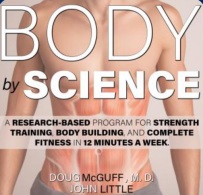MENTAL, physical and spiritual EXERCISES
The statement below is from Darius J Wright (Module 2 The library Workshop "Fasting Protocol For Health And Healing')
This statement is more of a “screw you” to the fitness industry for persuading people that they need to spend several hours per week, four to five days per week, in the gym for their health.
For the past year, I’ve been doing super slow training, which involves a high-intensity single set taken to failure. I train only once or sometimes twice per week, with workouts that last only 12-15 minutes.
Let that sink in, each workout one or two times per week, and each time, I do only one set, taken to failure for a total of 12-15 minutes per workout.
That’s a maximum of 30 minutes per week of training.
I also use a training technique called time static contraction, which involves holding a position without movement. Despite being around since the 70s, it’s not widely known or practiced, due to mainstream health and fitness brainwashing propaganda.
It’s a common misconception that multiple sets are needed to stimulate the body for optimal results. I used to believe this too, but now I know that all you need is one set taken to muscle failure to stimulate all the trainable factors of functional ability. So why do multiple sets when one set taken to failure is sufficient? Fear of missing out (FOMO) is a typical answer, but ignorance can also play a role.
To illustrate this point, let’s imagine clicking the button for an elevator. For a logical person, they just have to wait for the elevator to come to them. Clicking the button multiple times won’t make the elevator arrive any faster. Similarly, in multiple set training, people are often clicking the “elevator button” repeatedly, thinking that it will speed up the adaptive response. However, all it really takes is one proper set taken to muscle failure for the stimulus to be applied.
The approach I follow is called high intensity training for a reason. It involves using a deliberate and controlled rep speed, taking 3-10 seconds for both the positive (concentric) and negative (eccentric) phases of the exercise, with a set duration of 60-90 seconds taken to muscle failure. It’s important to note that our muscles generate force, not just movement. This is why you can even train with time static contractions, without lifting weights or moving, as long as you apply a high intensity of effort and muscle contraction to each exercise.
Another key point is that people often focus more on volume, meaning how many times they train per week, rather than intensity. However, it should be the opposite. You should prioritize intensity of effort and adjust your volume of training according to your recovery ability.
Personally, I have reached a point where I can only tolerate 5 sets per workout every 4-5 days. My ability to deeply and aggressively fatigue and stimulate my muscles has improved so much that doing more sets per workout would lead to overtraining. Despite only doing 5 exercises per workout with a total of 5 sets, my workouts only take 12-15 minutes to complete.
—-
Here’s a revised version of the routine with some suggestions for improvement:
To start with, I would recommend training twice per week and gradually increasing the intensity as your ability improves. Once every 4-5 days would be ideal for advanced training. Here’s a sample routine to get you started:
Lower Body (5-10 minutes total):
Hip extension movement: Leg press or squat
Leg extension: DIY home hack squat or leg extension machine
Knee flexion: DIY home Nordic curl (hold for 60 seconds) or leg curl machine
Upper Body (5-10 minutes total):
4. Vertical pull: Pull-ups or pull-down machine
5. Vertical press: Lateral raise or overhead press (OHP)
6. Horizontal pull: Cable row or bodyweight row
7. Horizontal press: Push-up or chest press machine
Arms (5 minutes total):
8. Biceps curl
9. Triceps push-down
Remember to perform only one set of each exercise, taken to momentary muscular failure, with a rep cadence of 3-10 seconds in both directions, and aim for a total time under load of 60-90 seconds.
As you progress, you may find it more challenging to do all exercises in one workout. In that case, you can split the routine into Workout A and Workout B as follows:
Workout A:
Lower Body (5 minutes total):
1. Hip extension: Squats
2. Leg extension: DIY hack squat
Upper Body (5 minutes total):
3. Vertical pull: Pull-ups
4. Horizontal press: Push-ups
Arms (3-5 minutes total):
5. Biceps curl
Workout B:
Lower Body (5 minutes total):
1. Leg extension: DIY hack squat
2. Knee flexion: Nordic static hold for 60 seconds
Upper Body (5 minutes total):
3. Horizontal pull: Rows
4. Vertical press: Lateral raises or OHP
Arms (3-5 minutes total):
5. Triceps push-downs
Remember, the idea is to not rest during the exercises and only take rest as needed. Resting for the sake of resting may hinder the aggressive stimulation and fatigue of the muscles.
——
When it comes to training to failure, many people think they are training to failure when they are actually just quitting when the exercise becomes uncomfortable. True failure is when you reach a point in the exercise where, no matter how hard you push, there is no movement possible, even if a gun was put to your head. This is called momentary muscular failure, and this is the point you need to strive for in your training.
It’s important to note that when training to failure, you should avoid putting your tendons and joints in a fully lengthened position. The idea of full range of motion being necessary for muscle stimulation is actually a myth. You can effectively stimulate and fatigue all the muscle motor units without even moving, using time static contraction.
For example, during a biceps curl, you should avoid fully lengthening your arm, as this can take tension off the muscle and increase stress on the tendons. Instead, lower the weight to about 45 degrees, keeping tension on the muscle and not the tendon. This allows for continuous muscular loading, emphasizing metabolic stress and mechanical tension, which are the key components for stimulating muscle growth.
Similarly, when doing squats, it’s common for people to fully stand up after each rep, effectively releasing tension in the muscles. To maximize tension on the muscles, aim to go to 90 degrees, just hitting parallel, and when coming up, keep the hips and knees slightly bent so that the muscles are always under tension and never get a rest until you reach failure and no more movement is possible.
Training to failure can be one of the most effective and time-efficient approaches to training. It’s like taking the express freeway to your destination, reaching your goals in a shorter amount of time compared to spending hours on country roads. So, strive to push yourself to true muscular failure for optimal results in your training routine.
—–
The best way to train can be understood by categorizing people into three groups:
1. The Volume People: These individuals train multiple days per week with the goal of muscle growth. They emphasize metabolic stress as a component of muscle growth.
2. The Powerlifting People: These individuals focus on lifting heavy weights to create mechanical tension and stimulate the body.
3. The Smart People: This group, which includes us, trains with intelligence. We perform a single set to failure 1-2 times per week with workouts that last 12-15 minutes. We use a weight in which we
can reach failure within 60-90 seconds, without having to lift heavy weights. We train super slow, always maintaining time under load without giving the muscles time to rest until we hit failure.
This approach addresses all of the muscle motor units, including slow and fast twitch muscle fibers, effectively stimulating the body for all of the general trainable factors of functional
ability.
By training in this manner, we are able to emphasize both metabolic stress due to continuous time under load and mechanical tension due to the last rep taken to failure, where we push as hard as possible. This approach makes logical sense for anyone with a functioning brain, as it effectively addresses all of the General trainable factors of functional ability.
Not only that, but this approach is also one of the safest ways to train. Here’s why:
1. We eliminate peak forces by performing super slow controlled movements taken to failure, which helps prevent injuries commonly seen in Group 2 due to fast and heavy lifting.
2. We also avoid overuse injuries as we do not train with a high volume like Group 1, who may experience constant wear and tear on their joints due to training multiple days per week. As part of
Group 3, we don’t have to worry about overuse injuries as our training frequency is lower.
By training in this intelligent manner with controlled movements, we prioritize safety and reduce the risk of injuries associated with peak forces and overuse. This makes it a logical and safe approach for those who value not only muscle growth and functional ability but also long-term joint health.
—
We also need to change our mindset that more is always better when it comes to training. It’s important to think logically about this, because when we start doing things that make sense, we can
achieve better results.
If more training was truly better, then why not go from training once a day to twice a day? Heck, if more was really better, why not train 24/7, 7 days a week? Logically, this should lead to even greater improvements, right? But that’s not how it works. Deep down, we already know that more is not always better, but when it comes to training, we often throw that logic out the window.
What we actually need is the minimum dose required for an adaptive response, which is often just one set taken to failure, combined with the principles I’ve already covered. Once you start training this way, you’ll realize that 90% of your workout time is actually pointless.
Understand that more is not always better, and I use an approach that makes logical sense.
The health and fitness industry often complicates things, making it difficult for people to understand this simple fact about training. In reality, high intensity of effort is all that’s required and should never be sacrificed to accommodate volume.
FYI. He is the one of the truthful people around!
I do not associate with his work. I am just a Big follower of his work and want to help to spread the Truth.
*Body by Science training is effective way to get the maximum health benefits for your body.
Body by Science is a high-intensity strength training workout program. The program is based on scientific research and challenges traditional exercise methods, with the goal of building muscle and burning fat in just 12 minutes a week.
Here you can get a basic undestending what it is and how it works.
Tai Chi
Tai chi is an ancient Chinese martial art. Initially developed for combat and self-defense, it has evolved into a sport and form of exercise. Tai chi is a gentle, low-impact form of exercise in which practitioners perform a series of deliberate, flowing motions while focusing on deep, slow breaths. Often referred to as "meditation in motion," tai chi aims to concentrate and balance the body's qi (vital energy), providing benefits to mental and physical health.
Tai Chi 5 Minutes a Day easy for Beginners
https://www.youtube.com/watch?v=cEOS2zoyQw4
Breathwork
Breathwork is a practice that involves intentionally changing your breathing pattern to improve your mental, physical, and spiritual well-being. People often find that breathwork can promote relaxation or energize them.
My favorites:
https://www.youtube.com/@BreatheWithSandy/videos
10 Minute Morning Breathwork Routine.The Key To Happiness
https://www.youtube.com/watch?v=Gb9YxCC5WBw
15 Minute Guided Breathing For Calm and Restful Sleep
https://www.youtube.com/watch?v=NwGtEMj54tI





